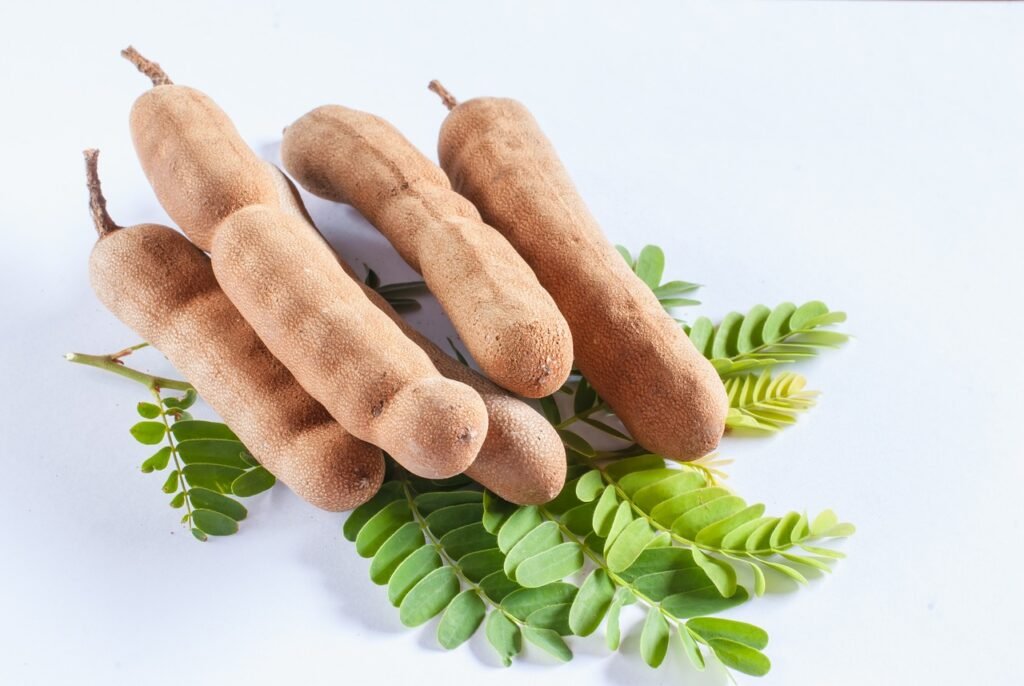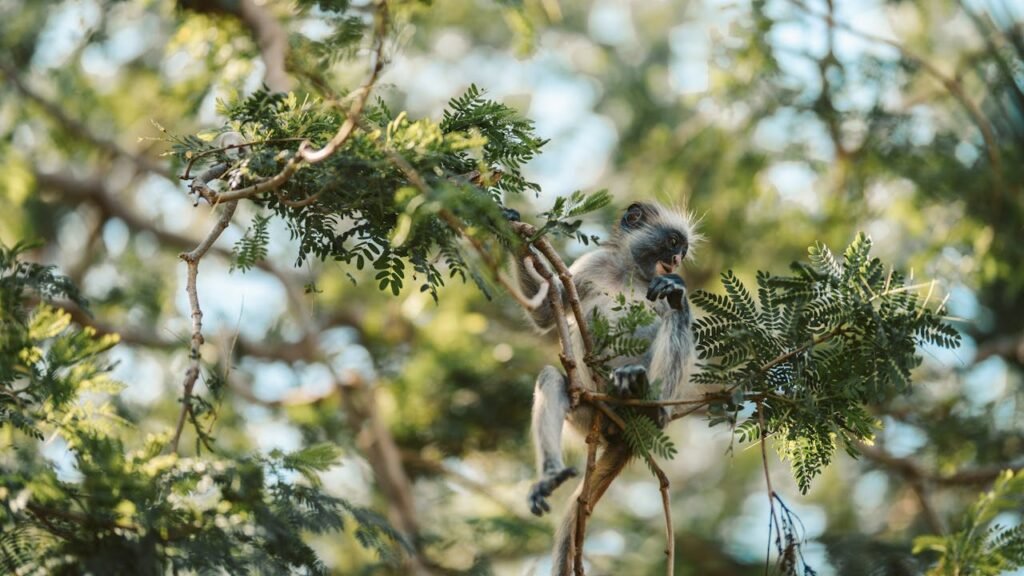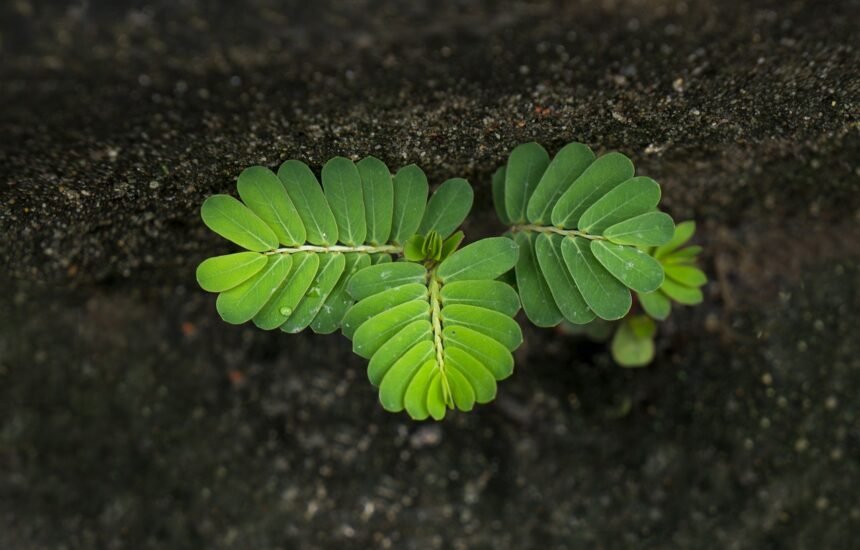Introduction to the Tamarind Tree
The tamarind tree (Tamarindus indica) is a tropical tree native to Africa, known for its lush foliage and distinctive pods containing a sweet and tangy pulp. This tree belongs to the family Fabaceae and can grow up to 80 feet in height, making it an impressive addition to any landscape. Historically, the tamarind tree has its roots in ancient civilizations, with references dating back thousands of years, notably in Indian Ayurveda and various traditional African practices.
Tamarind has earned its place in various cultures, particularly in Asia, the Middle East, and Latin America. Its pulp is widely used in culinary dishes, contributing a unique flavor that enhances sauces, relishes, and beverages. In addition to its culinary significance, the tamarind tree is celebrated for its nutritional value. The pulp is rich in vitamins, minerals, and antioxidants, providing health benefits such as improved digestion, anti-inflammatory properties, and potential blood pressure regulation.
The tamarind tree is also regarded for its medicinal uses, often being included in herbal remedies. Traditional healers use it for its antipyretic properties and as a natural laxative. Additionally, the leaves and bark have applications in various treatments, reflecting the tree’s diverse potential for wellness and health improvement.
Growing a tamarind tree can be a rewarding pursuit, not only for its practical uses but also for its aesthetic appeal. Whether one is looking to enhance their garden, contribute to ecological diversity, or utilize the tree for its edible components, the tamarind tree offers a myriad of benefits that make it worthy of consideration for both home gardeners and agricultural enthusiasts alike.
Tamarind Tree Varieties
The tamarind tree, scientifically known as Tamarindus indica, offers a range of varieties, each distinguished by unique characteristics, flavors, and growth habits. Primarily, tamarind can be categorized into two main varieties: sweet and sour. Understanding these differences is crucial for gardeners and culinary enthusiasts alike, as each variety serves specific purposes in cooking, traditional medicine, and other applications.
The sweet tamarind variety, often referred to as “Tamala,” is characterized by its soft, pulpy fruit with a rich, sweet flavor. This variety is typically preferred for culinary uses, particularly in desserts and beverages. In various cultures, sweet tamarind is enjoyed fresh or used in sauces, jams, and chutneys. Furthermore, its high sugar content and pleasant taste render it a popular ingredient in candy making. Besides its culinary value, sweet tamarind has uses in traditional medicine, where it is utilized for its digestive benefits and antioxidant properties.
In contrast, the sour tamarind variety, commonly known as “Tamarindo,” is distinguished by its tart flavor. This variety is highly valued for its use in savory dishes and sauces, especially across Asian and Latin American cuisines. It also plays a significant role in traditional beverages and is often called for in recipes that require a sour note. The sour tamarind is particularly beneficial in medicinal applications, as it is used to treat ailments such as sore throats and digestive issues.
When selecting a tamarind variety to grow, it’s essential to consider climatic conditions. Sweet tamarind thrives in warmer, tropical regions, while sour tamarind may tolerate a slightly broader range of temperatures. Understanding the specific needs of each variety can significantly enhance the likelihood of successful growth and fruit yield, making the cultivation of this tropical treasure a worthwhile endeavor.
Ideal Growing Conditions for Tamarind Trees
To cultivate tamarind trees successfully, it is essential to understand their ideal growing conditions, which encompass climate, soil type, and sunlight requirements. Tamarind trees thrive in tropical and subtropical regions, where temperatures consistently range between 77°F (25°C) and 95°F (35°C). They are not frost-tolerant, making it crucial for growers in temperate zones to provide a sheltered environment during colder months. Additionally, these trees flourish with a rainfall of approximately 24 to 35 inches (600 to 900 mm) annually, allowing for adequate hydration while preventing waterlogging.
Soil type plays a significant role in the health of tamarind trees. They prefer well-drained, sandy to loamy soils with a pH range of 6.0 to 7.5. Heavy clay soils can be detrimental, as they retain excess moisture, which may result in root rot. To prepare the soil effectively, growers should amend it with organic matter, such as compost or well-rotted manure, enhancing fertility and drainage capabilities. Conducting a soil test can be beneficial in determining existing nutrient levels and adjusting them accordingly for optimal growth.
Sunlight is another critical factor influencing the vitality of tamarind trees. These trees require full sun for at least six to eight hours each day. Choosing a planting location that receives ample sunlight will help ensure robust growth and fruit production. When establishing a tamarind tree, it is advisable to provide sufficient space for both roots and canopy, as they can grow large and spread wide. Ultimately, by meeting these ideal conditions—specific climate, suitable soil type, and abundant sunlight—growers can enjoy the vibrant beauty and fruitful yield of tamarind trees in their gardens.

Planting Tamarind Trees: Step-by-Step Guide
Planting a tamarind tree requires careful preparation and attention to specific details to ensure successful growth. Start by selecting high-quality seeds, which can be sourced from local nurseries or online retailers specializing in tropical plants. Choose mature seeds that are firm and free from any signs of disease or damage. This initial selection sets the stage for healthy growth in your tamarind tree.
Once you have obtained your seeds, the next step is to prepare them for planting. Soak the seeds in water for 24 hours prior to planting to soften the hard seed coat and enhance germination rates. Following this soaking period, it is recommended to plant the seeds about an inch deep in well-draining soil, ideally mixed with organic compost to provide necessary nutrients. You can also choose to start seeds indoors in seed trays before transferring them to your garden.
In terms of spacing, tamarind trees can grow quite large, so it is advisable to plant them at least 30 feet apart to allow for their mature size and canopy spread. This spacing prevents overcrowding and ensures adequate sunlight reaches each tree, promoting healthy growth. Choose a location that receives full sun for at least six hours a day and has protection from strong winds, which can damage delicate branches.
Irrigation is crucial during the establishment phase of your tamarind tree. Water the seedlings gently but thoroughly, ensuring that the soil remains consistently moist without becoming waterlogged. As the tree matures, it becomes more drought-resistant; however, during dry spells, periodic watering will still support optimal growth. For beginner gardeners, proactively monitoring soil moisture and adjusting watering frequency accordingly can facilitate a smoother planting experience.
Care and Maintenance of Tamarind Trees
Caring for tamarind trees (Tamarindus indica) is essential to ensure their healthy growth and productivity. Proper maintenance encompasses several aspects, including watering, pruning, fertilizing, pest control, and health monitoring. Each of these components plays a significant role in establishing a vigorous tree capable of thriving in its environment.
Watering is a critical factor in the care of tamarind trees. While established trees are somewhat drought-tolerant, newly planted specimens require consistent moisture to develop robust root systems. It is advisable to water young tamarind trees thoroughly, ensuring that the soil is moist but not waterlogged. As the tree matures, the watering frequency should be adjusted according to rainfall and soil drainage conditions.
Pruning is another essential aspect of tamarind tree maintenance. Regular pruning helps in shaping the tree and removing any dead or diseased branches. It is best carried out during the dormant season, typically in late winter or early spring, to minimize damage and encourage new growth. Proper pruning not only enhances air circulation within the canopy but also promotes fruit production by directing energy toward healthy limbs.
Fertilizing tamarind trees contributes to their overall health and can improve fruit yield. A balanced fertilizer with adequate nitrogen, phosphorus, and potassium is recommended during the early growth stages. Applying organic compost can also enrich the soil and promote beneficial microbial activity. However, it is crucial to monitor trees for signs of nutrient deficiencies, such as yellowing leaves or stunted growth.
Pest control measures are vital for maintaining tamarind trees’ vitality. Regular inspections should be conducted to check for common pests such as aphids, scale insects, and leafcutter ants. Integrated pest management strategies, including natural predators and organic treatments, can effectively minimize infestations without harming the trees or surrounding ecosystem.
In conclusion, the careful management of watering, pruning, fertilizing, and pest control are indispensable for the successful growth of tamarind trees. Monitoring tree health and providing necessary support will foster a thriving and productive tree, yielding the exquisite fruit that such trees are celebrated for.
Harvesting Tamarind: When and How
Harvesting tamarind is a meticulous process that requires careful attention to the maturity of the pods. The ideal time to harvest tamarind is typically between late summer and early winter, depending on the climatic conditions of the region. The pods generally take about six to nine months to mature after flowering, and knowing when to pick them is crucial for optimal flavor and usability.
Recognizing ripe tamarind pods is straightforward. They are ready for harvest when they change color from green to a brownish hue, indicating that they have fully matured. Additionally, ripe pods will feel slightly soft to the touch, and when shaken, they will rattle, suggesting that the pulp inside has separated from the shell. It is advisable to check the pods regularly as they can ripen unevenly, particularly on the same tree.
When harvesting tamarind, use scissors or pruning shears to cut the pods from the tree. This method prevents damage to both the pods and the tree itself. Care should be taken to minimize bruising, which could adversely affect the quality of the tamarind. It is best to harvest during dry weather to avoid moisture that can lead to spoilage. Once collected, tamarind pods should be handled delicately and stored in a cool, dry place away from direct sunlight.
To ensure the best quality, it is essential to store tamarind properly after harvest. Fresh tamarind pods can be kept in the refrigerator for a couple of weeks, while dried tamarind can last several months if stored in an airtight container. Maintaining optimal storage conditions helps preserve the rich flavor and unique qualities of tamarind, making it ready for use in various culinary applications.

Pests and Diseases Affecting Tamarind Trees
Tamarind trees, while generally resilient, are susceptible to various pests and diseases that can impact their health and productivity. Understanding these threats, along with effective management strategies, is essential for tamarind cultivation. Common pests that target tamarind trees include leafhoppers, aphids, and mealybugs. Leafhoppers can cause significant damage by feeding on sap and transmitting diseases, while aphids and mealybugs often lead to leaf curling and yellowing. Early detection is key; signs such as distorted leaves, sticky excretions, or the presence of ants may indicate an infestation.
In terms of disease, tamarind trees can be affected by fungal infections like root rot and leaf spot disease. Root rot is often caused by excessive moisture or poor drainage, leading to yellowing foliage and wilting. Leaf spot disease manifests as dark, necrotic areas on leaves, which can eventually lead to defoliation if left untreated. The prevention of these diseases can often be achieved through proper cultivation techniques, such as ensuring adequate spacing for air circulation and maintaining appropriate watering practices.
Organic and eco-friendly solutions are highly advocated to manage pests and diseases in tamarind trees. Introducing beneficial insects, such as ladybugs and lacewings, can help naturally control pest populations. Additionally, neem oil, derived from the seeds of the neem tree, acts as an effective repellent against various pests without harming beneficial insects. Regularly monitoring the trees for signs of distress and maintaining a healthy environment will facilitate a proactive approach. If diseases do occur, removing affected plant parts and applying organic fungicides may provide relief. By embracing sustainable practices, tamarind tree owners can effectively safeguard their plants while promoting ecological balance.
Culinary Uses and Nutritional Benefits of Tamarind
Tamarind is a versatile ingredient esteemed in various culinary traditions around the globe. Known for its tangy flavor, it is used in an array of dishes such as chutneys, sauces, and soups. In Indian cuisine, tamarind is a key ingredient in dishes like sambar and rasam, providing a sour taste that balances other flavors. Similarly, in Thai cooking, tamarind paste is integral to pad thai and various curries. Its distinct flavor profile enhances both sweet and savory dishes, making it a cherished component in different cultures.
Beyond its culinary applications, tamarind also boasts numerous nutritional benefits. It is rich in essential vitamins such as vitamin C, which plays a vital role in supporting the immune system, and B vitamins that are crucial for energy metabolism. Furthermore, tamarind contains a significant amount of dietary fiber, aiding in digestion and promoting gut health. The fruit is also known for its antioxidant properties, primarily due to the presence of polyphenols, which help fight oxidative stress and reduce inflammation in the body.
The health benefits associated with tamarind extend beyond its nutritional value. Some studies suggest that tamarind may assist in lowering blood sugar levels, benefiting those with diabetes. Additionally, its anti-inflammatory properties may offer relief from arthritis and joint pain. As such, incorporating tamarind into one’s diet can not only enhance flavor but also contribute to overall health and well-being.
Given its rich culinary use and substantial health benefits, tamarind serves as a remarkable tropical treasure. Engaging with this multifaceted ingredient not only enriches our palates but also supports our health, making it an essential addition to a balanced diet.
Frequently Asked Questions (FAQs)
When considering the cultivation of tamarind trees, potential growers often have a range of questions regarding their care and requirements. One common inquiry pertains to the soil conditions necessary for optimal growth. Tamarind trees thrive best in well-drained, sandy or loamy soils, typically with a pH level ranging from 6.0 to 7.5. It is crucial to avoid waterlogged conditions, as they can lead to root rot, inhibiting the tree’s growth.
Another frequently asked question relates to the time it takes for a tamarind tree to mature and bear fruit. Generally, tamarind trees may take anywhere from 5 to 10 years to reach sufficient maturity to produce fruit, depending on various factors such as cultivar, soil quality, and overall care. Good practices in fertilization and protection from pests can greatly influence the speed of their growth.
Climate adaptability is also a central concern. Tamarind trees are well-suited to tropical climates but can also adapt to subtropical regions. They require full sunlight and do not tolerate frost well, making it imperative for growers in cooler areas to take precautions during winter months. Planting the tamarind tree in locations that receive adequate sunlight can significantly enhance its growth and fruit production.
Lastly, gardeners often seek guidance on troubleshooting specific issues they may encounter while growing tamarind. Common problems include pest infestations, which can be managed through organic insecticides or natural predators. Additionally, leaf yellowing may indicate nutrient deficiencies or overwatering. Regular monitoring of your tamarind tree’s health and prompt action can help mitigate these issues before they escalate.






